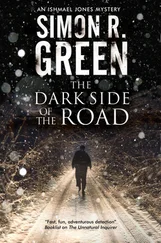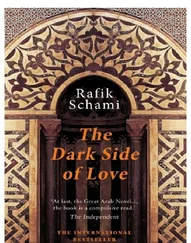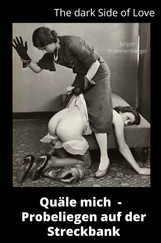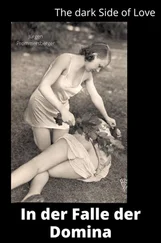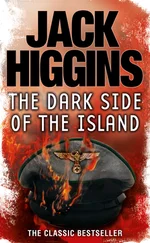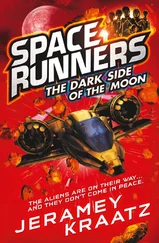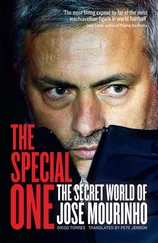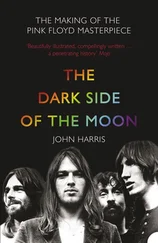At this point, Tamm told Waldrop, Roosevelt was “quick enough to realize something was up. He asked Hoover: ‘Why not?’
“Hoover: ‘I’ll put it on the other guy’”—the reporter—rather than wiretap a member of the cabinet.
“Roosevelt almost fell down laughing,” Tamm told Waldrop, “and said, ‘Edgar, I’m not going to tell you your business anymore.’”
Waldrop’s point was that Roosevelt was tougher than Kennedy in ways Kennedy could not fathom: “Joe never understood how FDR could smile and smile and be a villain. Joe thought once he was dealing with a friend, they could make a crooked deal.”
John F. Kennedy’s rise is a story that has been told and retold in hundreds of biographies and histories. The senator, always suntanned, with his photogenic wife and daughter, was the subject of articles for national magazines month after month in the late 1950s. When he wasn’t being interviewed, the senator, who relied on speechwriters on his staff and those in the pay of his father, published scores of newspaper and magazine articles as well as the bestselling Profiles in Courage , which won the 1957 Pulitzer Prize for biography.
Kennedy’s political standing was given an enormous boost at the 1956 Democratic National Convention, when he narrowly lost a dramatic floor fight against Senator Estes Kefauver for the nomination as Adlai Stevenson’s vice presidential running mate in the party’s doomed campaign against Dwight D. Eisenhower. Kennedy’s grace and seeming good humor in defeat, and his boyish good looks—viewed by millions of television watchers—overrode his lackluster record in the Senate and made him an early favorite for the party’s nomination in 1960. Kennedy ran hard over the next four years, spending most weekends making speeches and paying political dues at fund-raising dinners across America.
He made his mark not in the Senate, where his legislative output remained undistinguished, but among the voters, who responded to Kennedy as they would to a famous athlete or popular movie star. From the start the campaign was orchestrated by Joe Kennedy, who as a one-time Hollywood mogul understood that his son should run for president as a star and not as just another politician. In an exceptionally candid interview in late 1959 at Hyannis Port with the journalist Ed Plaut, then writing a preelection biography of Jack, the elder Kennedy said that his son had become “the greatest attraction in the country today. I’ll tell you how to sell more copies of your book,” Kennedy told Plaut. “Put his picture on the cover.” Plaut made a transcript of his interview available for this book.
“Why is it,” Kennedy asked, “that when his picture is on the cover of Life or Redbook that they sell a record number of copies? You advertise the fact that he will be at a dinner and you will break all records for attendance. He will draw more people to a fund-raising dinner than Cary Grant or Jimmy Stewart and anyone else you can name. Why is that? He has the greatest universal appeal. I can’t explain that. There is no answer to Jack’s appeal. He is the biggest attraction in the country today. That is why the Democratic Party is going to nominate him. The party leaders realize that to win they have to nominate him.
“The nomination is a cinch,” Joe Kennedy told the reporter. “I’m not a bit worried about the nomination.”
By the summer of 1960, with brother Bobby serving as campaign manager and father Joe as a one-man political brain trust—as well as secret paymaster—Jack Kennedy arrived at the Democratic convention in Los Angeles as an unstoppable front-runner who apparently had earned the right to be the presidential candidate by running in, and winning, Democratic primary elections across America. He had conducted a brilliant campaign that would set the standard for future generations of ambitious politicians, especially in its relentless tracking and cataloguing of delegate votes. One of Kennedy’s loyal aides, Ted Sorensen, would describe admiringly in Kennedy , his 1965 memoir, how Kennedy went over the heads of the backroom politicians and took his campaign to the people:
He had during 1960 alone traveled some 65,000 air miles in more than two dozen states—many of them in the midst of crucial primary fights, most of them with his wife—and he made some 350 speeches on every conceivable subject. He had voted, introduced bills or spoken on every current issue, without retractions or apologies. He had talked in person to state conventions, party leaders, delegates and tens of thousands of voters. He had used every spare moment on the telephone. He had made no promises he could not keep and promised no jobs to anyone.
What no outsider could imagine—and what Sorensen did not write about—was the obstacles overcome and the carefully hidden deals engineered as Kennedy achieved one political victory after another en route to Los Angeles.
Kennedy’s most important primary victory came on May 10 in West Virginia. In his campaigning in the state, Kennedy directly confronted the religious issue, telling audiences, for example, that no one cared that he was a Catholic when he was asked to fight in World War II. He defeated Senator Hubert H. Humphrey of Minnesota by more than 84,000 votes. In his memoir, Sorensen quoted another of Kennedy’s unsuccessful rivals for the nomination, Senator Stuart Symington of Missouri, as saying after the convention: “He had just a little more courage, … stamina, wisdom and character than any of the rest of us.”
Sorensen’s account, as with so much of the Kennedy history as told by Kennedy insiders, has many elements of truth but is far from the whole story. The Kennedys did not depend solely on hard work and stamina to win the primary elections en route to the Democratic nomination. They spent as never before in American political history. In West Virginia, the Kennedys spent at least $2 million (nearly $11 million in today’s dollars), and possibly twice that amount—much of it in direct payoffs to state and local officials.
A far more complete account of the campaign emerges in the unpublished memoir of one of Kennedy’s most trusted, and little-known, advisers during the 1960 campaign, Hyman B. Raskin, a Chicago lawyer who had helped manage Adlai Stevenson’s presidential campaigns in 1952 and 1956. Raskin had been recruited in late 1957 by Joe Kennedy, and secretly paid, to help plan and organize his son’s drive for the presidency. Raskin, who after the 1960 election retired to his law practice, died in comfortable obscurity in 1995 at the age of eighty-six in Rancho Mirage, California. His widow, Frances, later provided for this book a copy of his memoir, entitled A Laborer in the Vineyards , which contains a rare firsthand account of Joe Kennedy’s direct, and powerful, intervention in national politics on behalf of his son—interventions that were always hidden from the press. In Raskin’s account, the combination of unlimited campaign funding, Joe Kennedy’s high-level political connections, and Jack Kennedy’s strong showing in the Democratic primaries—especially his West Virginia victory—enabled the Kennedys to fly to Los Angeles knowing they had enough ironclad delegate commitments to win on the first ballot.
At the convention site, Raskin was entrusted with the all-important task of running communications. The Kennedys, in one of their political innovations, had leased a trailer and filled it with state-of-the-art communications gear that enabled the campaign’s backroom operators to reach the leaders of state delegations instantly. In his memoir, Raskin depicted the convention as anticlimactic for the campaign insiders: “We were confident that the [delegate count] numbers which the state reports produced would closely approximate those we had before the initial [convention] meeting was held.… It appeared impossible for Kennedy to lose the nomination. The votes merely needed to be officially tabulated; therefore, in my opinion, if he failed, it would be the result of some uncontrollable event.”
Читать дальше

